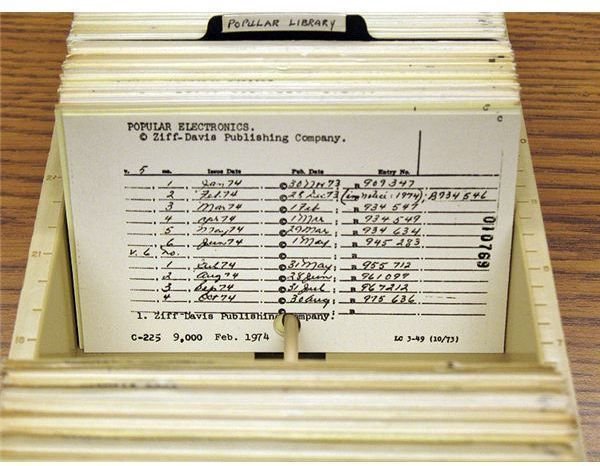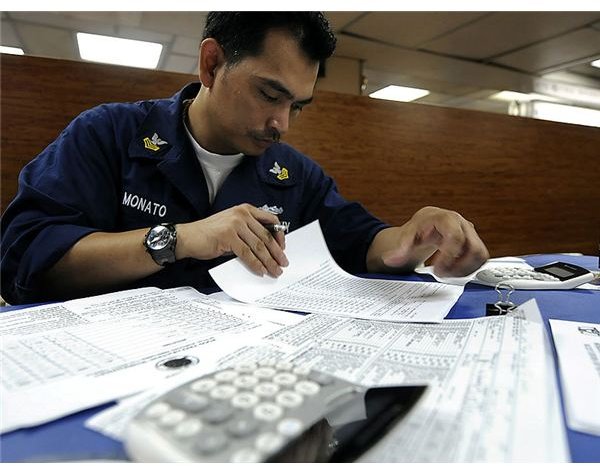Learning How to Reconcile the Accounts Payable GL Balance vs. Subsidiary Ledgers
The Basic Requirements of the Reconciliation Process
The basic requirements in learning how to reconcile accounts payable records include knowledge of the data that goes into the Accounts Payable General Ledger (AP-GL) control account and how this information is processed. Reconciliation per se is merely a method of ensuring that the balance of all GL control accounts will tally with the aggregate amount of their corresponding subsidiary ledgers. Knowing what transactions are involved and how they are recorded will provide the guidelines for reconciliation.
What is a GL Control Account?
First, a reference to a general ledger or GL control account pertains to the particular accounting component reflected in the financial statements. It is described as a control account because the end balance reflected for each accounting period will be the financial statement basis. An accounting period denotes any time–i.e. daily, monthly, quarterly, semi-annually, or annually–in which transactions are summarized in order to provide balances for financial reportorial purposes.
In addition, the GL control account basically summarizes numerous entries involving multiple sub-accounts; sub-account in this topic refers to the different creditors of the business. However, the reader should keep in mind that the entries posted in the GL control account are based on total transactions on a per-day basis and not on a per-transaction basis. Due to the numerous sub-accounts and journal entries involved, accounting for the creditors’ individual balances gives rise to the importance of maintaining subsidiary ledgers.
What is a Subsidiary Ledger?

Subsidiary ledgers are used as a per-account summary for the multiples of a particular transaction. As mentioned earlier, the sub-accounts for this article are the creditors; hence the creditors are the multiples of our AP-GL control account.
If we are to reconcile the Accounts Receivable GL control account, then our multiples would be the customers or borrowers of the business. Another example would be the Furniture, Fixtures & Equipment (FFE) GL control account; its multiples would be the description of each inventory item classified as FFE, e.g. chairs, computers, tables, delivery van, printer, etc.
Maintaining subsidiary ledgers for each multiple allows for traceability of data in an accounting system. In addition, it provides a summary of the accounting entries involving each creditor’s or borrower’s account. This would serve as ready references in determining how much is yet to be paid to the creditor or how much is yet to be received from the borrower.
Again, please take note that the summary of accounting entries referred to in an AP subsidiary ledger is on a per-creditor basis while the AP-GL control account is a summary of its debit and credit accounting entries per day. This will now prompt us to refer to another accounting tool called an “accountant’s proofsheet.”
What is an Accountant’s Proofsheet?

An accountant’s proofsheet is actually a working paper where all accounting and cashflow entries during the day are posted into T-accounts for the GL control accounts.
All T-account entries for the day will be sorted, summarized, and recapitulated in a trial balance to ensure that all debit and credit entries are equal.
In actual accounting practice, the person in charge of summarizing the day’s entire transactions into an accountant’s proofsheet is the supervising bookkeeper. The latter will also be tasked to post said entries in the General Ledger books.
The Essence of the Reconciliation Process
The essence of reconciliation is the matter of proving the equality between two aggregate amounts produced by two different accounting processes but pertaining to a single financial statement component.
-
In this case, the AP-GL control account balance was derived from a proofsheet summary of the daily transactions.
-
The total or aggregate amounts of all subsidiary ledger balances are summaries of transactions recorded and based on invoices, delivery receipts, billing statements, company’s check payments, and official receipts, on a per-creditor basis.
-
Any discrepancies between their aggregate amounts will denote that one or more transactions were not taken up in either the GL control account or the creditors’ subsidiary ledgers.
The next page on how to reconcile accounts payable contains the procedures to account for discrepancies between AP GL account vs. AP subsidiary ledgers.
How to Account for Discrepancies between AP-GL Balance vs. AP Subsidiary Ledger Total

It would be important to trace any such discrepancies that may surface during reconciliation processes. Otherwise, this could result in a possible imbalance in the overall equality of debits and credits of the GL books or an erroneous payable balance due to a creditor. This could also lead to possible overpayments or the unraveling of fictitious liabilities.
-
Review the daily proofsheet debit and credit entries for the Accounts Payable T-accounts, to ensure that all entries made therein pertained to accounts payable transactions.
-
Review the accounting entry tickets prepared by the Accounts Payable bookkeeper and take note if all accounting entries for a particular day were included in the daily proofsheet.
-
Check the supporting sales invoices, delivery receipts, and billing statements, filed on a per-customer basis, and make sure that all accounting entry tickets are supported by those particular documents. Attaching a copy of the duly-approved accounting entry ticket to every customer billing statement will indicate that the document was properly processed.
-
Review all checks issued to creditors and match them against the entries appearing per creditors’ subsidiary ledger accounts.
-
Ensure that the amounts appearing on corresponding check payments and accounting entry tickets are based on the “net amount due” appearing on the billing statement and not the original amount of the sales invoice. The possibility of early payment discounts being overlooked is a potential cause for discrepancy.
-
Verify if all payments were taken up as debit entries to the AP-GL control account and subsidiary ledgers. On the other hand, all purchases on account should have been taken up as credit entries.
-
Verify if all check payments issued and received by creditors were issued with corresponding official receipts, since these documents serve as the creditor’s acknowledgment of your company’s payment.
-
You may also find it necessary to verify who presented your company’s check payment for clearing. This can be determined by checking the bank endorsements at the back of the checks, already presented against your company’s bank account. It is important that the endorser and the payee are the same and that they are legitimate creditors.
-
If all verification of accounting records still do not produce the cause for the discrepancy between the AP-GL control account and the creditor’s subsidiary ledger, it would be best to reconcile your records with those of your creditors’.
-
All source documents used in recognizing your company’s liabilities should originate from bonafide creditors. A thorough check may reveal that the source of your discrepancy would be a fictitious payable account.
Summary:
In learning how to reconcile accounts payable GL balance vs. accounts payable subsidiary ledgers, appreciate the best practice of performing the reconciliation process daily–right after all transaction entries have been posted. That way, recording of the next round of journal entries will always start on a clean slate. In cases of discrepancies, there will be fewer transactions to review and verify.
This recommendation as well as the reconciliation process presented above are true and applicable for all other GL control accounts, since bookkeeping tends to be a repetitive and mechanical task. In addition, control officers and internal auditors may also find it necessary to perform periodic reconciliation procedures to serve as deterrents against attempts of fraud.
Reference Materials and Image Credit Section:
References:
- Author cscantoria’s personal files for Audit Procedures & Techniques
Image Credit Section:
- General ledger
- Copyright Popular Electronics 1974.jpg
- Culinary Specialist 1st Class Neil Monato verifies figures on a food preparation worksheet while underway aboard the amphibious command ship USS Blue Ridge
- Submitted invoices
This post is part of the series: General Ledger Basics and Examples
Learn how to prepare, read and analyze general ledgers. Also, find examples and free templates you can download for personal or business use.
